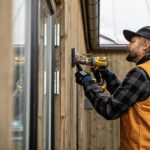By: Matthew Kayser
The future of dairy is about more than just production capacity; it’s also a matter of succession, sustainability, and whether farming remains a viable livelihood for the next generation. For Cody Williams, third-generation operator of Wil-Roc Farms and now Del’s Roadside, the conversation starts long before processing plants, supply chains, or retail velocity. It starts with a simple observation: farming is aging, and margins are tightening.
“The industry as a whole is getting older,” Williams says. “70% of agricultural assets in the U.S. will likely change hands in the next two decades. Food is the foundation of society, and we need to find ways to bring more value back to farming.”
According to Williams, dairy is capital-dense, regulated, and operationally demanding. Consolidation, he notes, is not just a passing trend; it appears to be a structural reality of the modern dairy economy, where margins fluctuate, pricing is often set far from the farm gate, and efficiency is not merely a choice but may be a prerequisite for survival.
“Dairy is traded like a commodity,” he explains. “The price is influenced long before it reaches the farm, so the question becomes: how can we build resilience into a system that we don’t fully control in terms of pricing?” For Williams, the answer may lie in diversification without disconnection, building new revenue pathways that help strengthen the farm rather than detract from it. This approach led to the 2023 expansion of Del’s Farmhouse Creamery and the retail launch of Del’s Roadside, two community storefronts that reconnect the Williams family with the consumer-facing relationship their predecessors once built through home milk delivery in the 1930s and ’40s.
“We started by delivering milk directly to the doorstep, then the industry shifted and pushed farms into more centralized production,” he says. “Going direct to the consumer again helps us close the circle. It offers a way to create more value from the farm all the way to someone’s table.” The strategy is about both economics and proximity: shortening the distance between producer and consumer in ways that may restore agency, storytelling, and margin to the farm level.
“A lot of value is created after milk leaves the farm,” he says. This ethos extends into sustainability, which Williams views less as a compliance category and more as a long-term cost and energy strategy. Wil-Roc Farms is currently developing a methane-to-energy system designed to convert manure emissions into electricity for on-farm use and potential grid contribution.
“It allows us to capture methane, produce energy, reduce the carbon footprint of what we make, and possibly return power to the grid,” he says. “When sustainability projects also strengthen the farm’s operating model, they can become transformative rather than just symbolic.” Yet beyond innovation in energy or retail, Williams believes the most urgent work is cultural: the reframing of farming as a viable, respected, and potentially aspirational career path.
“There aren’t many young people entering this industry,” he says. “We want to be part of helping to change that. If we want passionate, smart, and capable individuals to consider agriculture, we have to show that it can provide stability, impact, and meaningful careers,” he says. “Consumers want real, traceable, honest products from people they can trust. If we can build systems that return the value of that trust to the farm, we create better outcomes on both sides: farms benefit, communities benefit, and the next generation may see a future worth stepping into.”
He also believes public perception of dairy is slowly shifting toward what he describes as a “back-to-real” product mindset, less about marketing labels, more about authenticity, nutrition, and origin. “People don’t want 12 competing signals on a carton anymore,” he says. “They want to know who made it, how they cared for the land, and whether they can trust the product. Trust is becoming a key factor now.”
That emphasis on transparency, lineage, and stewardship is what Williams hopes will guide the next generation of dairy leadership across farming communities facing similar transition points.
“We are farmers first,” he says. “If we can rebuild systems that reward that work, improve the quality of life for those doing it, and encourage younger people to embrace the future of food, then we are doing both: producing dairy and restoring something more meaningful. That’s the real legacy.”

















